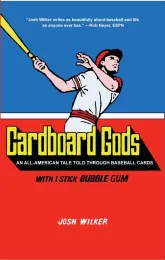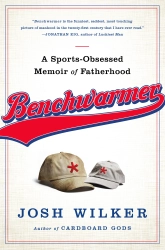
Amos Otis
April 12, 2011According to the Gods: a 2011 Team-By-Team Preview
Kansas City Royals
The Kansas City Royals have not been good for a long time, so when I first saw that this 1977 Amos Otis card was going to suggest the fortunes of the 2011 edition of the team, I figured it meant that, at long last, the team was finally going to begin changing from bad to good. Now, after giving the card and Amos Otis some more thought, I’m not so sure of that word: good.
The numbers on the back of Amos Otis’s cards were always comforting to me. He was good. The numbers said so. He was not bad. He was not great. He was good.
After Amos Otis’s career ended, the numbers on the backs of his baseball cards were shown to be incomplete: they didn’t show Amos Otis’s ability to draw walks or steal bases or that he was a brilliant centerfielder or that he played in a pitchers’ era and in a spacious ballpark that adversely affected power-hitting stats. No less an expert on interpreting statistical data than Bill James advocated for the abilities of Amos Otis, naming him the 22nd best centerfielder in baseball history and describing him as “strong, quick, fast, extremely graceful, and smart. He was the best percentage player on that team.”
Otis, in light of all this, began to seem as if he might be beyond good. Very good? Great? What centerfielders had more of a positive impact throughout the 1970s? Cesar Cedeno, maybe? I know it’s arbitrary to block off a particular span of time and rank players within it, but I also know that for better or worse I pretty much live in the 1970s, so it’s important to me to know who in that era was bad, and who was good, and who was great.
The funny thing is, I find myself as reluctant to move Amos Otis up a level from my long-held belief in him as good, exactly good, as I would be if called upon to move him down a level. For me, for whatever reason, Amos Otis has to be good. He was good way back when I began to discern good from bad, and I’m not talking just about numbers. There was something else I affixed to Amos Otis. I always felt drawn to him, as if he was a version of the person I wanted to be: solid, unassuming, good. Amos Otis, I believed, was good at baseball and just an all-around good person. Bill James notes in his appreciation of Otis that “about once a year or so it would break into the letters to the editor that he had been caught secretly performing some unusual act of good citizenship—stopping on the interstate to pick up a fan having car trouble or something.” I didn’t know about those letters to the editor, but there was something about Amos Otis as I knew him—almost entirely through baseball cards, that is—that communicated this goodness. Maybe it was his kid-friendly, slant-rhyming, cartoonish name, or his knack for blending politely into the background behind more spectacular talents such as George Brett and Hal McRae, or his mild, benevolent facial expressions, or his quietly groovy sideburns. All these things probably fed into my image of him—my faith in him—as an embodiment of good, but above all those things were his numbers. I already knew as a kid that some things were true and some things were false and most things fell into the hazy gap between the two, and to navigate or at least endure such an uncertain world I looked to the numbers.
I look to the numbers on the back of his 1977 card again today, and the numbers are what they always were, the same now as they were when I was a kid, but then I turn the card back around and look at the picture of Amos Otis on the front. He is holding a bat. It is a bat, presumably, that helped build the numbers. Some years after his retirement, Otis spoke candidly about his bats and his numbers, saying “I had enough cork and superballs in there to blow away anything.”
He made this revelation many years ago, but it was during a time when I wasn’t paying as much attention to baseball as I had previously or would again in later years, so I just found out about it now, this morning, while trying to move back toward my first beliefs about Amos Otis and the world. I’ve circled back around to baseball, and to Amos Otis, and I find that the numbers I thought would never change, that would stand as a singular still point in a world of change, have changed. I don’t even know if Amos Otis is good, but I still want to believe that he is.
Eventually, you come to find there aren’t any absolutes. You take from this game what you need.
***
How to enjoy the 2011 baseball season, part of 24 of 30: Check in with Craig Calcaterra, whose tirelessly obsessive chronicling of all things large and small in the world of baseball does not keep him from digging deep for new, thoughtful perspectives on the game
***
2011 previews so far: St. Louis Cardinals; New York Mets; Philadelphia Phillies; Washington Nationals; Pittsburgh Pirates; Arizona Diamondbacks; Colorado Rockies; New York Yankees; Cleveland Indians; Detroit Tigers; Milwaukee Brewers; Minnesota Twins; Atlanta Braves; Cincinnati Reds; Oakland A’s; Seattle Mariners; Chicago Cubs; Baltimore Orioles; [California] Angels; Texas Rangers; Boston Red Sox; San Diego Padres; Tampa Bay Rays






The only revelation concerning Amos Otis I ever had, growing up as a Mets fan, was the following soundbite; echoing perversely over and over and over again, as one decade of futility spilled over into the next..
” December 3, 1969: Traded by the New York Mets with Bob Johnson to the Kansas City Royals for Joe Foy. ”
Joe Foy.
In addition to being a great person, Amos Otis had a baseball name that not even Robert Coover could have invented. He was consistently good, and I’m sure if you saw him play in person on a daily basis like Bill James did, you could say he was great.
Say it ain’t so, Amos!
well, another one bites the dust. i also grew up a mets fan — and still am one — and amos otis was always a favorite of mine. cork was one thing, but superballs? now, that takes super balls. if it never bothered me that gaylord perry “cheated,” why should it bother me that amos otis did? and mark mcgwire? and the rest of the shady gang? but it does, especially when someone as good, as wholesome as amos otis does it, and isn’t ashamed to admit it. words such as “good” and “solid” always came up when thinking about amos otis, now to be replaced by “cork” and “superballs.” oy vey.
For what it’s worth, the show “MythBusters” concluded that a corked bat doesn’t offer any advantage:
http://mythbustersresults.com/episode83
“For what it’s worth, the show “MythBusters” concluded that a corked bat doesn’t offer any advantage”–
Graig Nettles, you are off the hook!
I have no doubt those guys are correct. Supposedly the advantage was that it made the bat lighter, but it’s hard to imagine anybody thought the tiny weight difference would mean anything.
(BTW, I just noticed that Nettles is 66. Kill me now.)
AO was my favorite player from 1972, when I began following the rising Royals. He batted third then and was the team star.
His defense (three Gold Gloves), speed (52 steals to lead the AL in 1971 and a .786 lifetime success rate), power (26 HRs in 1973 and a two-time doubles champ in AL) and general coolness made him stand out.
In the mid-1970s, as the Royals became a power, with 7 playoff appearances in 10 years, AO was forced from the spotlight by George Brett. He made 5 All-Star teams but belong in more, especially in 1977, 1978 and 1982.
Amos moved own to hitting 5th or 6th or moved up 2nd. He didn’t third in the magic 3 hole anymore on a regular basis. Brett did.
Plus, stories continued to appear of Amos being surly or uncooperative, declining all interview requests. Brett, his mentor Hal McRae and other Royals (Al Cowens, with his great 1977 season), SI cover boy Clint Hurdle and troubled star catcher Darrell Porter got more attention.
Fred Lynn became the CF of the second half of the 1970s. AO hurt his ankle leading off Game 1 of the 1976 playoffs, losing another spotlight chance.
Amos produced at bar and continued to shine in the outfield despite repeated reports that Willie Wilson would assume CF. Amos just didn’t get much good press.
But the reality was he was an excellent player. He combined defense, hitting and baserunning at a high level. The Royals won and he was a big reason. His 1980 World Series (.478 average, 3 HRs, record for chances by an OF in a game, set in Game 3) is among the best Series’ performances of all time.
But the Royals moved him out of CF, reduced his at-bats and generally sjit on him. He left the team in the closing weeks of the 1983 season with barely a thanks. Just wnt home when told there would be no contract for 1984.
AO played a few games for the 1984 Pirates and quit. His career ended quietly, perhaps fitting for a cool figure who didn’t want to depart in a blaze of controversy.
He and pitcher Steve Busby, the great pitcher who was abused by the Royals after his two no-hitters as a fledgling starter and blew his arm out, were in the first Royals Hall of Fame class. But KC didn’t and hasn’t retired his number and mediocre players still wander about with 26 on their back.
Thanks to Bill James and Sabre writers, AO’s true greatness has become evident. HOF? Apparently not but damn close, much closer than was thought at the time he patrolled the spacious outfields of the 1970s.
And he was a nice guy, too: Here’s a link to newspaper copy of a story of AO helping out 8 kids stranded in a storm.
http://news.google.com/newspapers?id=FJkfAAAAIBAJ&sjid=ZdQEAAAAIBAJ&dq=amos%20otis%20baseball&pg=3713%2C4902443
I shook his hand in September 1976 at a Royals game in Minnesota, Wished him well. The ankle injury leading off the series was a tragedy for me as a kid and probably cost KC a pennant. His grip was devastatingly powerful, my dad and i agreed then and now.
Brett has since said AO was one of the best all-around players of recent decades. Well-earned and appropriate prise.
Amos left a memory that day and for his 14 years in Kansas City. Helluva player. And the corked bat and Super Balls? Ah, maybe one of those kids he helped out left it in his pickup.
Give me 9 Amos Otises and I’ll manage a team that would win 130 games. I don’t think he ever led the league in anything but he was in the top tier in EVERYTHING.
Many it SUCKS when you find out who the frauds are! The rationalization I muster is that at least the opposing team has the opportunity to check opponents bats (i think????) ie Pine tar incident.
Stealing signs does not even rate.
Steroids PEDS etc is the worse…….that is why i like the scrawny gods of my youth before cheaters reign supreme. Why can’t i get steroids???? Why why why..